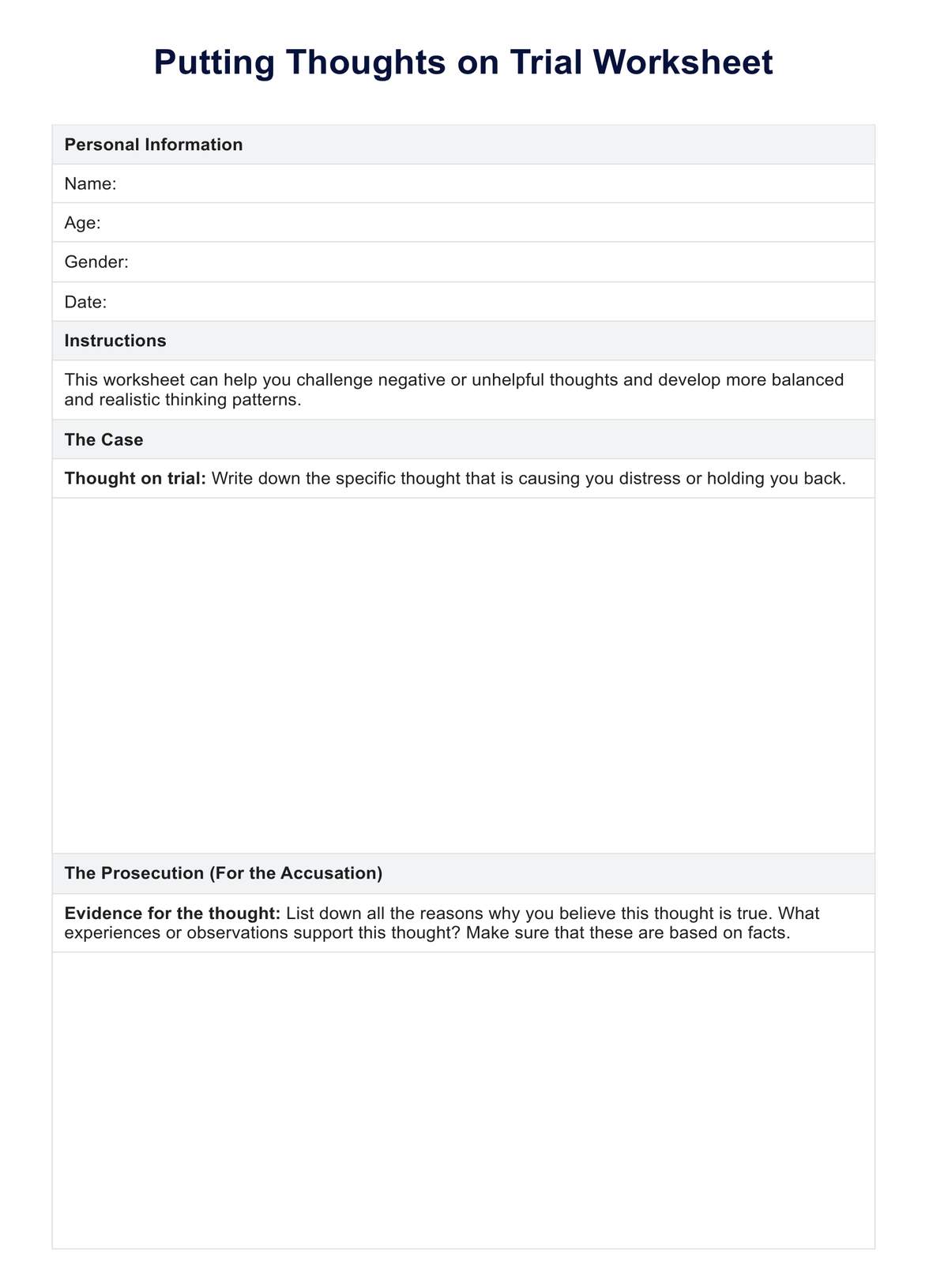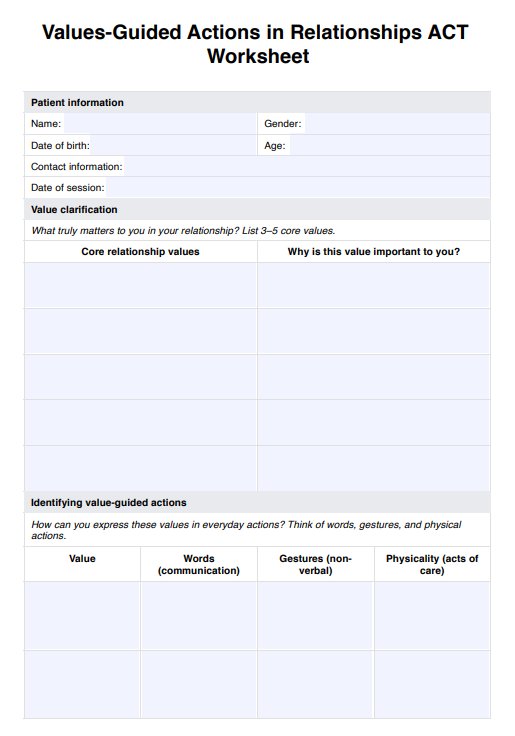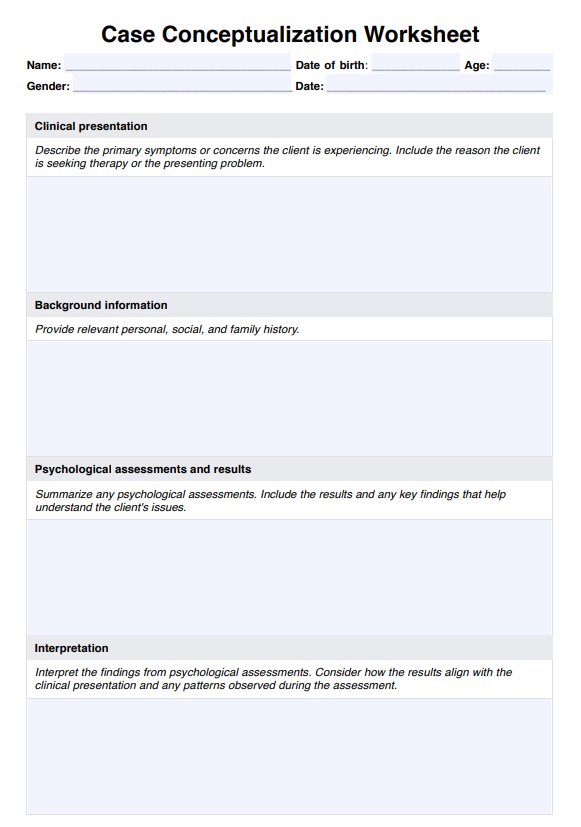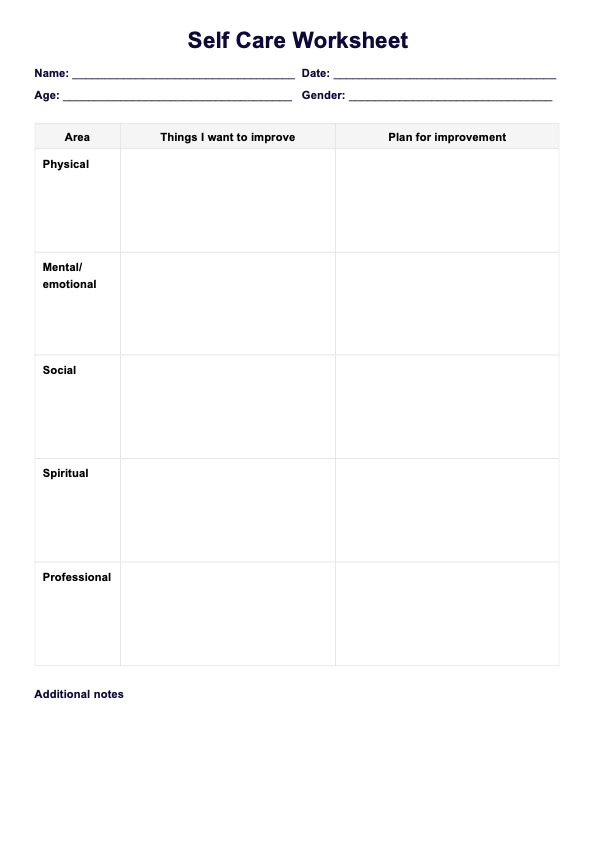Post Traumatic Growth Worksheet
Navigate traumatic events with our post traumatic growth worksheet. Foster recovery and find resilience in the aftermath. Start healing today.


What is Trauma and PTSD?
Trauma and post-traumatic stress disorder (PTSD) are part of many lives, impacting mental health on profound levels. Consider the scenario of a car accident—a common traumatic experience.
Trauma is the emotional aftermath of severe events, including accidents or natural disasters, with initial shock and denial leading to lasting effects such as unpredictable emotions, flashbacks, and physical symptoms. PTSD can develop from traumatic events like combat or terrorism, resulting in distressing memories, avoidance, and physiological symptoms like disturbed sleep and heightened startle response (American Psychological Association, 2008).
In the aftermath, one may find their mental health tangled in a web of emotions, unable to escape the clutches of anxiety, fear, and distress.
These overwhelming feelings are part of the trauma narrative, a complex interplay of experiences that etch themselves into the very core of our being. The course of trauma often unfolds in unexpected ways, affecting not only our minds but also manifesting in physical sensations throughout the body. This connection between mental and physical realms emphasizes the holistic nature of trauma's impact.
Recovering from trauma is not a linear journey. It is common for individuals to encounter difficulties and setbacks, leading to a sense of failure. However, it is essential to focus on the beneficial aspects of the recovery process.
Understanding that symptoms of trauma can occur long after the initial experience is crucial. Unresolved emotions and difficulties may surface unexpectedly, affecting daily life and relationships. Developing skills to navigate these challenges is essential, and seeking support becomes a beacon of hope. Mental health professionals' role is crucial in guiding individuals through the complexities of trauma recovery.
Trauma is a multifaceted experience that transcends the mind, coursing through the body and affecting every aspect of life. Acknowledging the essential connection between mental health, emotions, and physical well-being is critical. Focusing on the helpful aspects of progress and seeking support can pave the way towards healing.
Post Traumatic Growth Worksheet Template
Post Traumatic Growth Worksheet Example
The effects of trauma on everyday life
Trauma stemming from severe events like accidents or natural disasters leaves an indelible mark on individuals, impacting their everyday lives. It is crucial to comprehend the wide-ranging effects, as they can extend beyond the initial experience and significantly influence emotional, behavioral, and psychological well-being.
Emotional responses
Trauma often elicits intense emotional responses that can persist long after the event. Feelings of fear, anger, and sadness may become a constant companion, creating a complex dynamic landscape for individuals to navigate.
Impact on children and young adults
Children and adolescents, especially, may find it challenging to comprehend and articulate the emotional impact of trauma. Each year, millions of children worldwide encounter traumatic experiences (Ponnamperuma & Nicolson, 2018). Research shows that childhood trauma is linked to enduring physical, mental, and emotional symptoms that may extend into adulthood (Dye, 2018).
Behavioral changes
The effects of trauma can manifest in significant behavioral changes. Individuals may exhibit avoidance behaviors, avoiding situations or reminders that trigger distressing memories. Understanding these behavioral shifts is pivotal for recognizing the aftermath of trauma.
Anxiety and depression
Trauma is closely linked to the development of anxiety and depression. The ongoing process of dealing with the emotional distress associated with trauma can contribute to the emergence of these challenges.
Post traumatic growth
Amid the struggle, there is a concept known as post-traumatic growth. This psychological phenomenon, measured by tools like the Post Traumatic Growth Inventory, suggests that individuals can experience positive changes in their perspectives, relationships, and personal strength through the recovery process.
Struggles and benefits in daily life
Trauma survivors often grapple with the daily struggle of managing overwhelming feelings. However, seeking treatment and engaging in therapeutic interventions can lead to tangible benefits. Concepts like self-compassion, explored in psychology, are integral to the healing process, providing individuals with tools to navigate the challenges of life after trauma.
A look at Trauma Therapy Techniques
Trauma therapy encompasses various evidence-based techniques designed to address the intricate needs of individuals who have experienced significant psychological distress. These therapeutic approaches aim to empower patients in their journey toward healing, providing practical tools and strategies to navigate the aftermath of traumatic events.
Cognitive Processing Therapy (CPT)
CPT, a cognitive-behavioral therapy developed in the late 1980s, effectively reduces PTSD symptoms from various traumatic events like child abuse, combat, rape, and natural disasters. It is a widely used therapeutic technique that focuses on helping individuals understand and challenge distorted thoughts related to their traumatic experiences. By encouraging patients to reframe negative beliefs and perceptions, CPT aims to facilitate cognitive restructuring and promote a more adaptive outlook.
Prolonged Exposure Therapy
Prolonged exposure therapy involves systematic and gradual exposure to memories, situations, or objects related to the traumatic event, helping patients confront and process distressing memories. By repeatedly revisiting the trauma in a safe and controlled environment, patients can achieve a sense of mastery over their fears. For example, a military veteran with PTSD may gradually expose themselves to loud noises, recreating a controlled environment to mitigate anxiety.
Trauma-Focused Cognitive Behavioral Therapy (TF-CBT)
Trauma-focused CBT is specifically designed for children and adolescents who have experienced trauma. It combines traditional cognitive-behavioral therapy techniques with trauma-specific interventions. TF-CBT incorporates elements like psychoeducation, relaxation techniques, and trauma narratives to help young clients process and integrate their experiences.
These therapies, along with trauma therapy exercises and timeline worksheet, provide individuals with access to practical tools for navigating the complexities of trauma. By offering a range of therapeutic options, clinicians can plan interventions tailored to each patient's unique needs, promoting a positive legacy for their future healing journey.
How to use this worksheet
This worksheet allows you to reflect on your experiences, identify strengths, and cultivate positive changes in the aftermath of trauma. Follow these steps to make the most of this resource:
Step 1: Download the template
Begin by downloading the Printable Post Traumatic Growth Worksheet. Ensure you have a quiet and comfortable space to engage in self-reflection. Having a digital or printed access of the worksheet will make revisiting your responses easier.
Step 2: Complete patient information
Fill in the relevant information in the "Patient Information" and "Health Information" sections. Providing accurate details ensures a personalized approach to your healing.
Step 3: Reflect on the trauma
Take your time to describe the traumatic event in detail. Acknowledge its impact on various aspects of your life, emotions, and relationships.
Step 4: Explore coping strategies
List the mechanisms you've used since the trauma. Consider the effectiveness of the coping skills and note any adjustments needed for better coping.
Step 5: Identify strengths
Reflect on the personal strengths that have emerged or strengthened post-trauma. Recognize how these strengths have aided you in navigating challenges.
Step 6: Note positive changes
List the positive changes you've noticed within yourself. Explore how these changes have influenced your overall perspective on life.
Step 7: Set personal goals
Establish both short-term and long-term goals for personal growth. Align these goals with your values and aspirations.
Step 8: Build support systems
Identify individuals or communities that provide support. Consider ways to strengthen these connections for ongoing healing.
Step 9: Practice gratitude
Reflect on aspects of life you are grateful for despite the trauma. Explore how practicing gratitude can contribute to your overall well-being.
Step 10: Find meaning
Explore any new meanings or purposes that have emerged from your experience. Consider how you can integrate these into your daily life.
Step 11: Consult regularly with a mental health professional
Throughout your journey, remember to consult regularly with a professional. This worksheet is a tool for self-reflection, but professional guidance can provide additional support and insights.
Who can use this worksheet?
The Post Traumatic Growth Worksheet is to be utilized in various situations where individuals, therapists, and support networks seek to navigate the complexities of post-traumatic experiences. Whether you are a professional or on a personal growth journey, here are specific instances when leveraging this resource can prove invaluable.
For individuals on a personal growth journey
If you find yourself grappling with a traumatic event and are eager to embark on a journey of personal growth, the Post Traumatic Growth Worksheet is your compass. It is a structured guide to help you reflect on your experiences, identify strengths, and set meaningful goals. Whether facing challenges in your relationships, experiencing emotional distress, or striving for positive changes in your life, this worksheet provides a practical framework for self-reflection and progress.
For mental health professionals
Integrating this into your practice can enhance the therapeutic process. It becomes a valuable aid in facilitating open discussions about the impact of negative experiences, identifying coping strategies, and setting realistic goals for growth. The worksheet catalyzes meaningful conversations, allowing you and your clients to chart a course toward post-traumatic growth collaboratively.
For support networks and therapeutic groups
The Post Traumatic Growth Worksheet fosters a sense of community and shared purpose in group settings or support networks. Whether you are a facilitator guiding a therapeutic group or an individual within a support network, this resource can be a centerpiece for collective reflection and goal-setting. It encourages participants to exchange insights, provide mutual support, and collectively work towards post-traumatic growth.
References
American Psychological Association. (2008). Trauma. https://www.apa.org. https://www.apa.org/topics/trauma/
American Psychological Association. (2008). Posttraumatic stress disorder. https://www.apa.org. https://www.apa.org/topics/ptsd/
About CPT. (n.d.). Cognitive Processing Therapy for Posttraumatic Stress Disorder. Retrieved January 9, 2024, from https://cptforptsd.com/about-cpt/
Dye, H. (2018). The impact and long-term effects of childhood trauma. Journal of Human Behavior in the Social Environment, 28(3), 381–392. https://doi.org/10.1080/10911359.2018.1435328
Ponnamperuma, T., & Nicolson, N. A. (2018). The Relative Impact of Traumatic Experiences and Daily Stressors on Mental Health Outcomes in Sri Lankan Adolescents. Journal of traumatic stress, 31(4), 487–498. https://doi.org/10.1002/jts.22311
Commonly asked questions
The worksheet serves as a guided tool to help individuals reflect on their post-traumatic experiences, identify strengths, and set goals for personal growth.
Mental health professionals can use the Post Traumatic Growth Worksheet as a structured aid to facilitate discussions on the impact of trauma, coping strategies, and collaborative goal-setting.
Yes, the worksheet is adaptable for group therapy or support network settings, fostering a sense of community, shared reflection, and collective progress toward post-traumatic growth.


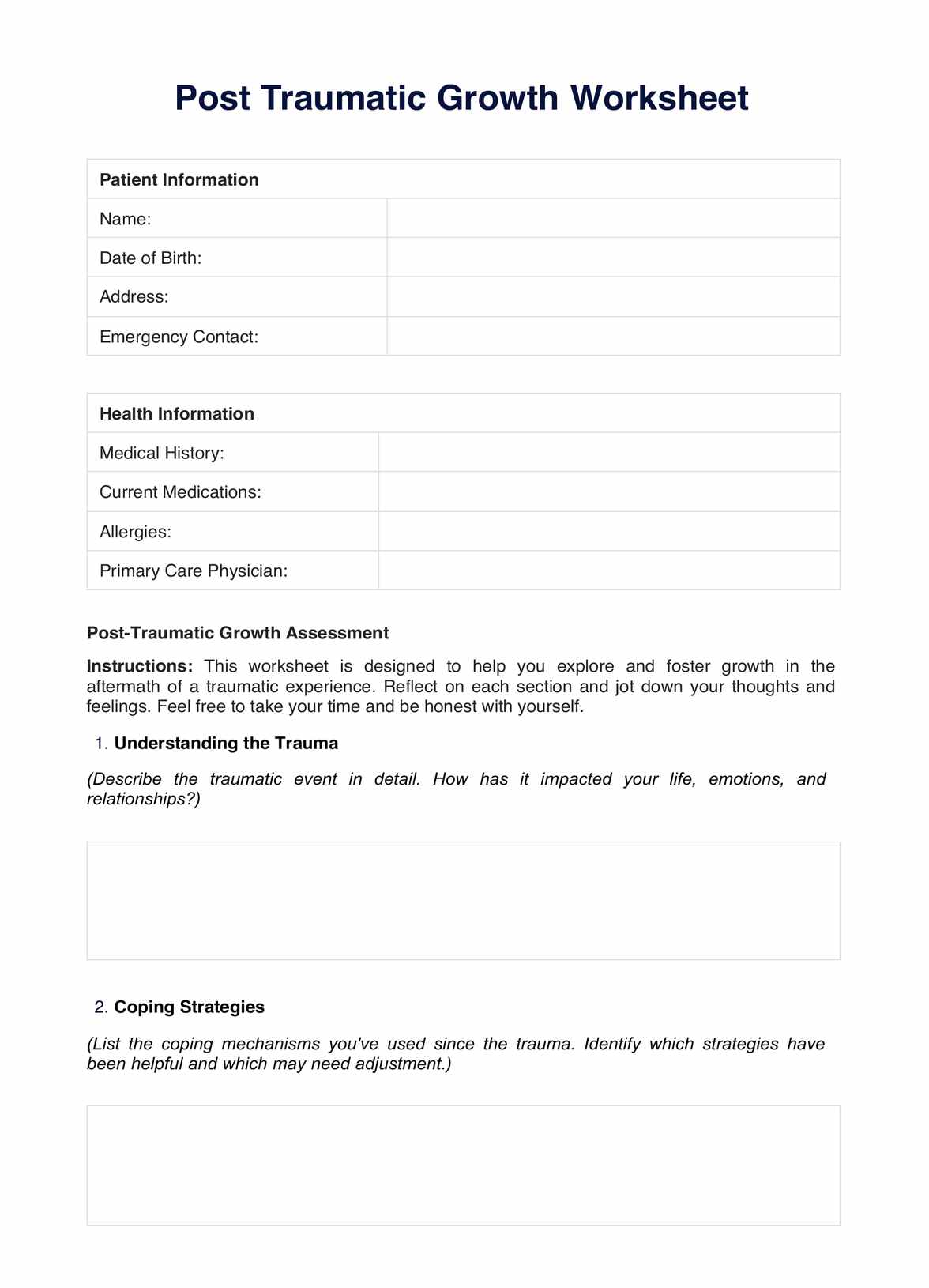
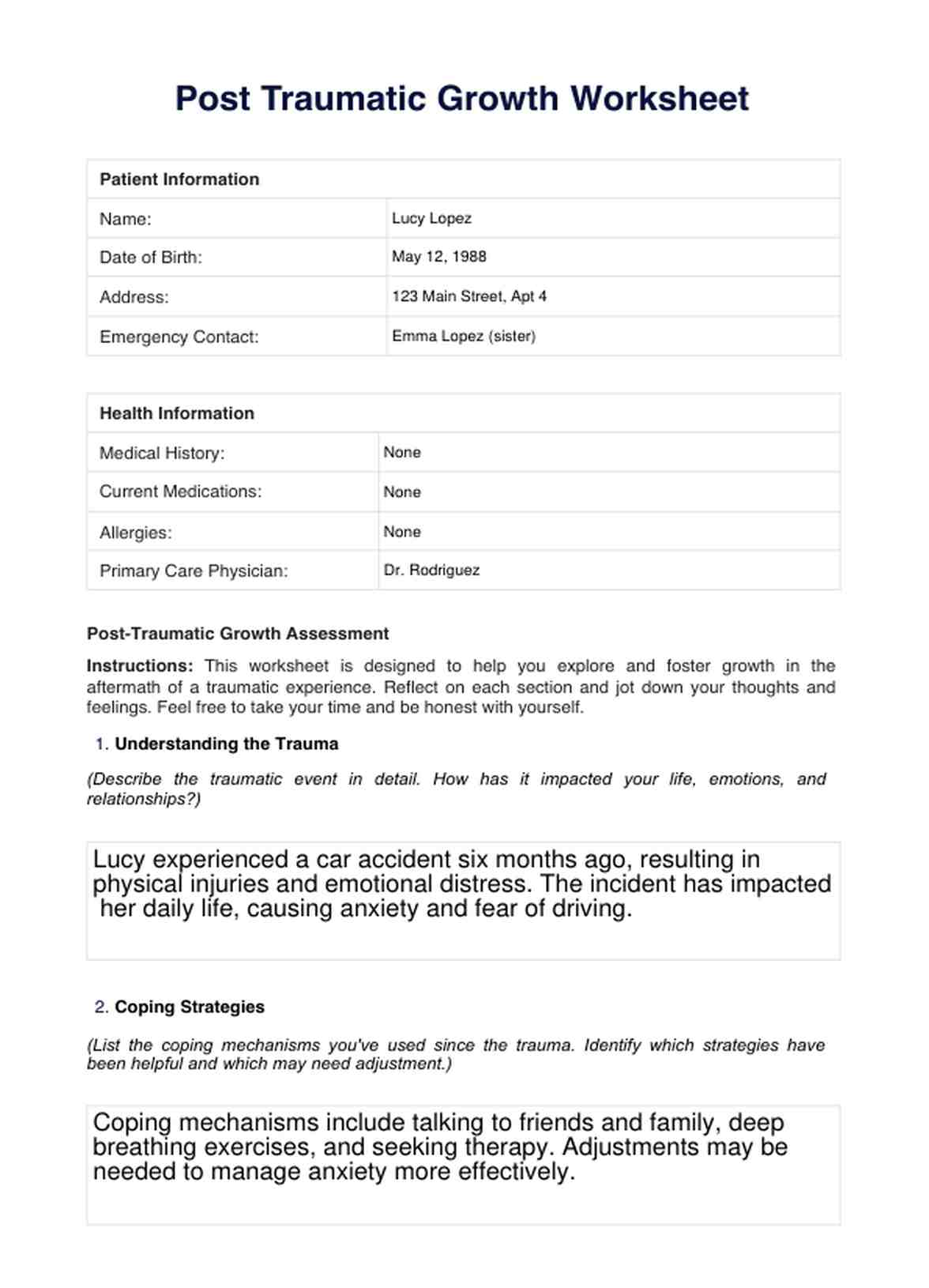

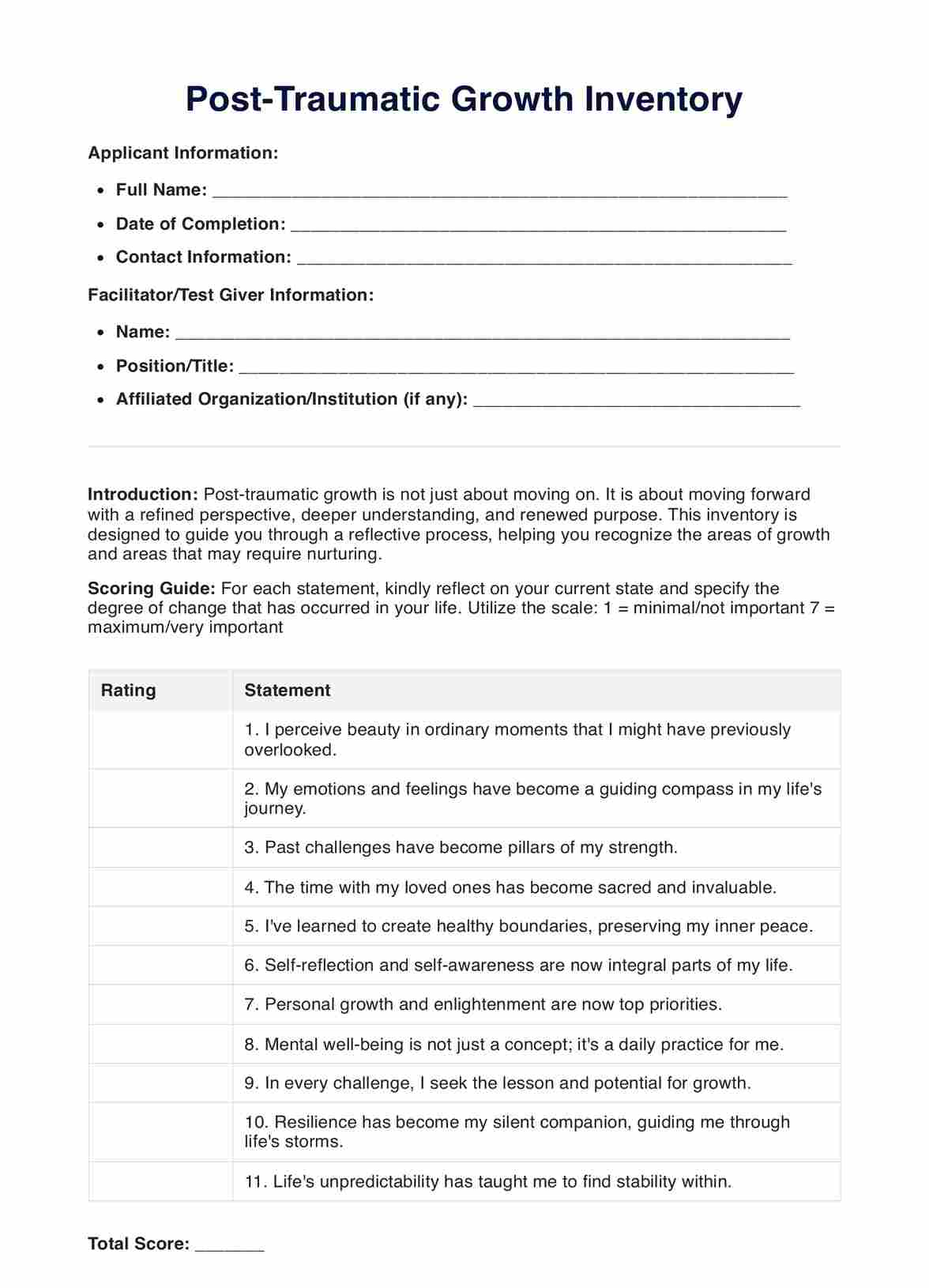
















-template.jpg)


























































































